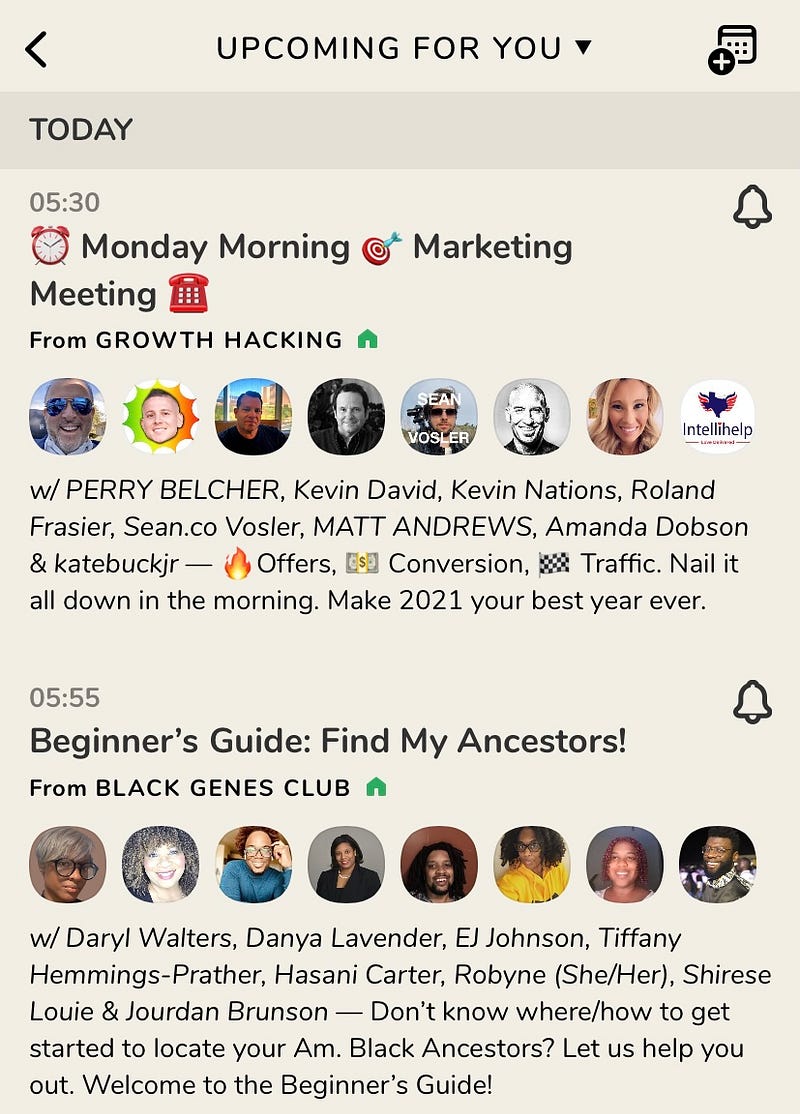Unpacking the Rise of Clubhouse: A Social Audio Revolution
Written on
Chapter 1: The Emergence of Clubhouse
Social audio platforms like Clubhouse are creating quite a stir in the tech landscape. This innovative platform taps into the creativity, intimacy, and authenticity that audio can provide.

A quick online search for “What is Clubhouse?” reveals a plethora of recent articles discussing this rapidly expanding social network. Although it’s still in its infancy, Clubhouse has garnered attention due to its invite-only model, which adds a sense of exclusivity.
What sets Clubhouse apart from established platforms like Facebook, Instagram, TikTok, and YouTube is its focus on audio. This unique medium merges the traditional feel of text chatrooms with the immediacy and emotional depth of spoken conversation. The app harnesses the creativity and intimacy inherent in audio, aligning perfectly with the ongoing renaissance of podcasting.
Despite its success, Clubhouse faces significant challenges, including privacy and harassment issues. These hurdles could impede its impressive growth trajectory, which has seen it balloon from 1,500 users and a $100 million valuation in May 2020 to 2 million active users weekly, with a potential valuation nearing $1 billion.

How It Works
Once you secure an invitation, navigating the app is a straightforward process. Users can consult a calendar to discover conversations that align with their interests, selected during sign-up. Alternatively, you can explore “rooms” hosting live discussions or create your own events. These rooms can be either public or private, allowing for quiet listening or active participation, and you can join or leave freely.
Activities range from interviews to panel discussions, with some members even staging performances, like a recent rendition of “The Lion King: The Musical,” complete with actors and a choir.
Chapter 2: The Appeal of Clubhouse
The allure of Clubhouse is fueled by its exclusivity, media attention, endorsements from high-profile figures like Tesla's Elon Musk, and substantial investments from venture capitalists. As a storytelling scholar, I've pinpointed three additional factors that may sustain its popularity.
First, audio provides an intimate medium. Listeners can pick up on the nuances of a speaker's tone, conveying emotions and personality in a way text cannot. Humor can often be misread in written communication, but hearing someone’s voice diminishes that risk.
Furthermore, direct communication can foster empathy and understanding, especially on sensitive subjects like grief, addiction, and mental health, in ways that text may fall short.
Second, the element of serendipity is ever-present. While structured discussions have become common on Clubhouse, users can freely drop into rooms on diverse topics, from hip-hop to health tech.

The spontaneity of eavesdropping on random conversations adds an unpredictable element to the experience. Although quality discussions can be elusive, Clubhouse aims to cultivate a “Creators” program to foster its own influencers.
Moreover, a lack of structure can be refreshing. With so much media consumption now dictated by algorithms, the chance to stumble upon new content is appealing.
Lastly, audio serves as an excellent background medium. Many people have grown up with audio playing in their homes, making it perfect for multitasking. Users can engage with content while commuting, working, or even walking their dogs. Clubhouse thrives on this dynamic, providing an array of voices and experiences at a time when social interaction is more limited.
Major Growing Pains
As Clubhouse expands, it faces heightened scrutiny and challenges. Like other social networks, it must tackle issues such as misinformation and content moderation. In an unregulated environment, users can express whatever they wish, leading to potential misinformation and harmful content. Reports of harassment and discrimination abound, despite such behaviors violating Clubhouse's community guidelines.
Privacy and security are also pressing concerns, with instances of unauthorized rebroadcasting of chats and vulnerabilities that could expose user data. Additionally, the app’s current exclusivity to iPhone users is problematic, given that over 70% of the global population uses Android devices. The process of closing an account also appears to be more complex than necessary.
Riding the Audio Wave
Whether Clubhouse will remain a topic of conversation in six months remains uncertain. However, the attention it has garnered is part of a broader renaissance of the audio medium in recent years. Podcasting continues to grow, with over a million podcasts available, while platforms like Spotify prioritize podcasts in their growth strategies.
Audible, Amazon’s audiobook service, is also expanding globally, and smart speakers like Amazon Echo and Google Home are among the fastest-growing technologies, allowing users to access music, podcasts, and news on demand.
Clubhouse is not alone in this trend. Reports indicate that Facebook is working on a similar audio platform, while Twitter has launched Twitter Spaces. Tech analyst Jeremiah Owyang has identified over 30 social audio initiatives, dubbing it a “Goldilocks” medium for the 2020s: too much text and too much video are overwhelming, but social audio strikes the right balance.
The human desire to connect and share stories is timeless, and this is the essence of audio’s appeal, driving renewed interest in the medium. While Clubhouse may be the current digital campfire, it’s unlikely to be the last.
The first video titled "What is the Clubhouse Social Media App? How to get on it and get started !!" offers insights into how users can join and navigate the platform effectively.
The second video, "How To Get Clients On Social Audio Apps (Clubhouse, Spotify Greenroom, Twitter Spaces)," provides strategies for leveraging social audio platforms for client engagement.
Damian Radcliffe is the Caroline S. Chambers professor of journalism at the University of Oregon. This article is republished from The Conversation under a Creative Commons license.